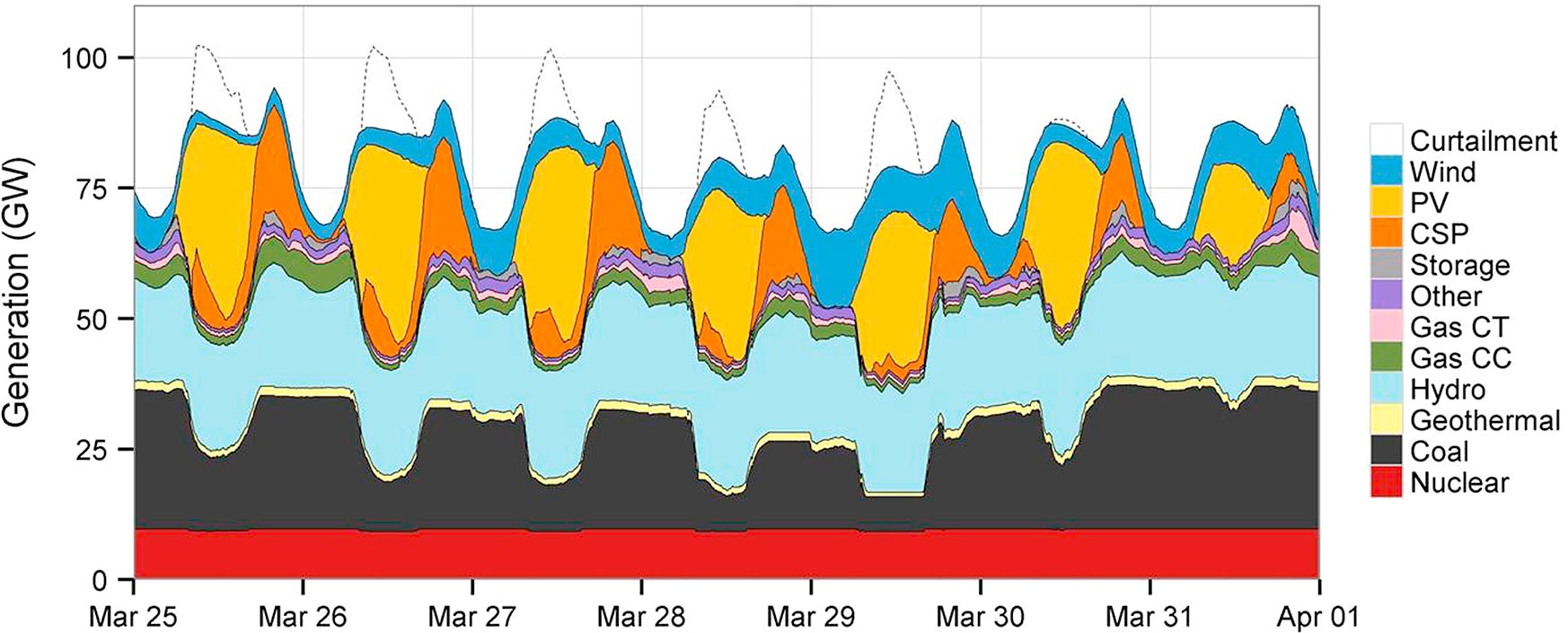How Low Can Conventional Generators Go? NREL Explains Why Minimum Generation Is Key to Maximum Renewable Integration
NREL Explains Why Minimum Generation Is Key to Maximum Renewable Integration
A new article in the journal Energy Policy illustrates the importance of quantifying power system operational constraints to enable more renewables on the grid.

Minimum generation levels resulting in renewable curtailment.
One of the key issues with integrating renewables on the electric grid is understanding how they interact with the rest of the power system—specifically, how much system operators need to vary the output of conventional generators to accommodate the variability of wind and solar. Coal and gas plants have operational constraints that prevent them from ramping down or shutting off, even when renewable resources are producing cheaper energy—essentially establishing a ceiling on the amount of variable generation that can be provided in any interval.
This so-called “minimum generation problem” is now widely recognized as a crucial constraint on our ability to deploy high levels of wind and solar on the grid. It’s why system operators worry about the “belly” of the duck curve—and why they are increasingly likely to curtail perfectly good wind and solar generation. Given the impact of this issue on renewable deployment, National Renewable Energy Laboratory (NREL) analysts Paul Denholm, Greg Brinkman, and Trieu Mai recently published an article in the journal Energy Policy titled “How low can you go? The importance of quantifying minimum generation levels for renewable integration.”
“We at NREL spend a lot of time collecting and processing data on minimum generation constraints, and we realized it might be useful to provide a compact overview of the topic,” said Denholm, lead author of the study. “So this paper is a deep dive into one of the many things we need to ‘get right’ in order to accurately understand renewable integration: how we model minimum generation at NREL, where we (and others) can get data about it, and what happens if you get it wrong.”
Using multiple data sources and methods, and incorporating case studies for two locations in the U.S. (California and Texas) that demonstrate the sensitivity of variable generation curtailment to grid flexibility assumptions, the study is mainly targeted toward the grid modeling community—but the topic has broad policy implications for renewable deployment. According to the study authors, if minimum generation levels are incorrectly quantified, that can seriously underestimate our ability to put renewables on the grid.
“As more renewable resources are added to the power system, concerns about ‘bottoming out’ the system grow,” Denholm said. “To abate these concerns, we need to continually evaluate and re-evaluate the various flexibility options available to utilities and other system planners—including reducing minimum generation levels and energy storage.”
While storage technologies may be more exciting, NREL’s study indicates that it may actually be more effective to incentivize operational practices that economically make coal and gas plants more flexible. According to the study, reducing system-wide minimum generation by 1 gigawatt would decrease curtailment by about twice as much as would adding the same amount of storage capacity.
“This is an overly simplistic example, of course, as energy storage provides a host of other benefits,” Denholm said. “But it reveals that we have a long way to go in studying the role of conventional generators in providing new sources of grid flexibility.”
Access the full Energy Policy paper.
Last Updated May 28, 2025
